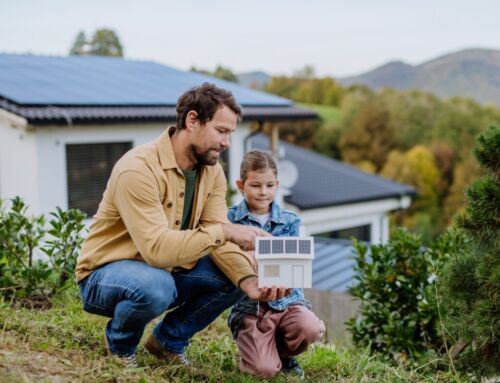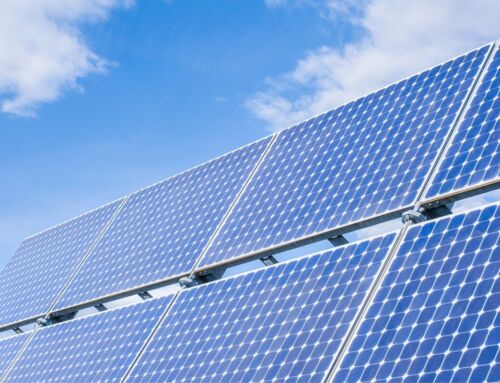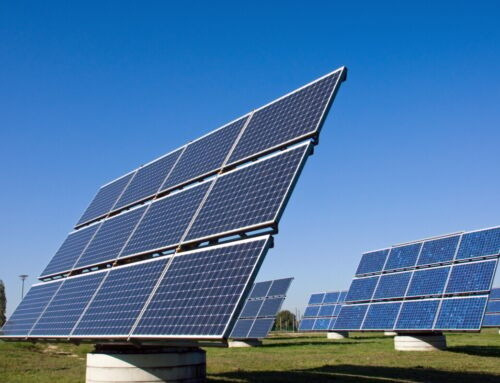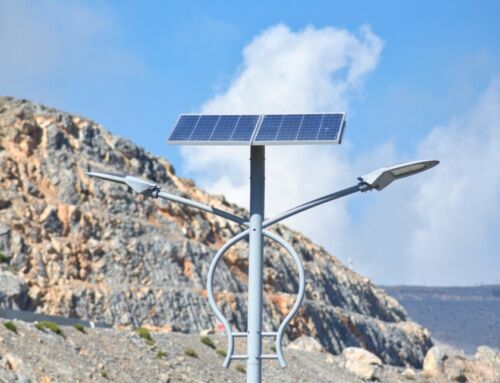Estimate Your Solar Panel Needs Easily
Understanding Your Energy Consumption: The First Step to Estimating Solar Panel Needs
Understanding your energy consumption is the crucial first step in estimating your solar panel needs. By knowing how much energy you use, you can determine the size and number of panels required to meet your household’s demands. This step-by-step approach ensures that you invest in a solar system that is both efficient and cost-effective, ultimately maximizing your savings and minimizing your carbon footprint.
Analyze Your Energy Bills Start by reviewing your electricity bills over the past year.
Look for patterns in your energy usage, noting any seasonal variations. This will give you a clear picture of your average monthly consumption, which is essential for calculating how many solar panels you’ll need.
Consider Future Changes
Think about any upcoming changes that might affect your energy use, such as adding new appliances or expanding your home. Factoring in these potential increases ensures that your solar panel system can accommodate future energy needs, providing long-term sustainability.
Once you have a clear understanding of your energy consumption, you can move on to calculating the number of solar panels required. Use online calculators or consult with a solar energy expert to get precise estimates tailored to your specific needs. By following these steps, you can confidently determine how to estimate solar panel needs, ensuring a seamless transition to renewable energy.
How to Calculate Your Home’s Sunlight Exposure for Optimal Solar Efficiency
Estimating your solar panel needs step by step is crucial for maximizing your home’s energy efficiency and reducing electricity bills. Understanding how to calculate your home’s sunlight exposure is a vital part of this process, as it directly influences the number of panels you’ll need. By accurately assessing your sunlight exposure, you can ensure optimal solar efficiency, making your investment in solar energy worthwhile and sustainable.
Assess Your Roof’s Orientation and Tilt
- South-facing roofs generally receive the most sunlight.
- Roof angle should ideally match your latitude for maximum efficiency.
Evaluate Shading Obstacles
-
Identify potential obstructions like trees or buildings.
-
Consider seasonal changes in sunlight exposure.
Use Solar Calculators
- Online tools can provide estimates based on your location and roof specifics.
- Input accurate data for precise results. By following these steps, you can effectively determine how to estimate solar panel needs, ensuring your solar setup is both efficient and cost-effective. Transitioning to solar energy becomes a seamless process when you understand your home’s unique sunlight exposure characteristics.
Determining the Right Solar Panel Size for Your Household
Understanding how to estimate solar panel needs is crucial for optimizing energy efficiency and cost savings in your household. By determining the right solar panel size, you ensure that your energy requirements are met without overspending on unnecessary capacity. This step-by-step approach not only helps in making informed decisions but also maximizes the return on your solar investment. Let’s dive into the process of accurately assessing your solar panel needs to ensure your home is powered efficiently and sustainably.
Assess Your Energy Consumption
-
Review Past Utility Bills: Start by examining your electricity bills over the past year to understand your average monthly energy consumption.
-
Identify Peak Usage: Note any seasonal variations or peak usage periods that might require additional energy. ### Calculate Solar Panel Output
-
Consider Sunlight Exposure: Evaluate the amount of sunlight your location receives, as this affects the efficiency of solar panels.
-
Factor in Panel Efficiency: Different panels have varying efficiency rates, so choose one that aligns with your energy goals and budget. By following these steps, you can confidently determine the optimal solar panel size for your household, ensuring a seamless transition to renewable energy.
What Factors Influence the Number of Solar Panels You Need?
Estimating your solar panel needs step by step is crucial for maximizing efficiency and cost-effectiveness in your solar energy system. Understanding the factors that influence the number of panels required can help you make informed decisions, ensuring you harness the sun’s power effectively. By considering these elements, you can tailor your solar setup to meet your energy demands and budget.
Energy Consumption
Your household’s energy consumption is a primary factor in determining how many solar panels you’ll need.
Start by reviewing your electricity bills to understand your average monthly usage. This data provides a baseline for calculating the size of the solar system required to meet your energy needs effectively. Consider seasonal variations in energy use to ensure your system can handle peak demands.
Sunlight Exposure
The amount of sunlight your location receives significantly impacts the number of panels needed. Areas with abundant sunshine may require fewer panels, while regions with less sunlight might need more to generate the same amount of energy.
Assessing your roof’s orientation and any potential shading from trees or buildings is also essential in this estimation process.
Panel Efficiency
Not all solar panels are created equal.The efficiency of the panels you choose will affect how many you need. Higher efficiency panels can produce more electricity from the same amount of sunlight, potentially reducing the total number of panels required. When learning how to estimate solar panel needs, consider both the efficiency and cost of different panel options to find the best fit for your situation.
How to Estimate Solar Panel Needs Based on Your Energy Goals
Understanding how to estimate solar panel needs is crucial for anyone looking to transition to solar energy. It not only helps in optimizing energy consumption but also ensures that your investment is cost-effective and tailored to your specific energy goals. By estimating your solar panel needs step by step, you can determine the right number of panels required to meet your energy demands, ultimately leading to significant savings on electricity bills and a reduced carbon footprint.
Assess Your Current Energy Usage
- Review your electricity bills to understand your average monthly consumption.
- Identify peak usage times and any seasonal variations.

Ready to take the next step? Discover how solar energy can elevate your home and reduce those energy bills. Request a Free Solar Estimate at NEW SOLAR QUOTE
Define Your Energy Goals
- Decide if you want to cover 100% of your energy needs or just a portion.
- Consider future energy needs, such as electric vehicles or home expansions. By following these steps, you can accurately gauge the number of solar panels needed to achieve your energy goals. This method not only aligns with your current consumption patterns but also anticipates future energy requirements, ensuring a sustainable and efficient solar energy system.
Exploring Different Types of Solar Panels: Which is Right for You?
Understanding how to estimate solar panel needs is crucial for anyone considering a switch to solar energy. This process not only helps in determining the right number of panels but also ensures that your energy requirements are met efficiently. By exploring different types of solar panels, you can make informed decisions that align with your energy goals and budget. Let’s dive into the various options available and find out which type of solar panel is right for you.
Which is Right for You?
When it comes to choosing solar panels, understanding the different types available can significantly impact your decision.
The three main types are monocrystalline, polycrystalline, and thin-film solar panels.
- Monocrystalline Panels: Known for their high efficiency and sleek appearance, these panels are ideal for those with limited roof space. They tend to be more expensive but offer better performance.
- Polycrystalline Panels: These are more affordable and have a slightly lower efficiency. They are a great option for larger spaces where maximizing efficiency isn’t as critical.
- Thin-Film Panels: Lightweight and flexible, these panels are perfect for unconventional spaces.
However, they generally offer lower efficiency compared to crystalline panels. Choosing the right type of solar panel involves balancing efficiency, cost, and space considerations. Start by assessing your energy needs and available installation area. Consider factors like climate and roof orientation, as these can influence panel performance. By understanding these elements, you can make a well-informed decision that optimizes your solar investment and meets your energy needs effectively.
Budgeting for Solar: Estimating Costs and Savings
Understanding how to estimate solar panel needs is crucial for anyone considering the switch to solar energy. This step-by-step approach not only helps in determining the right size and number of panels but also plays a significant role in budgeting effectively. By accurately estimating your solar panel needs, you can ensure that your investment is both cost-effective and capable of meeting your energy demands. This process involves analyzing your current energy usage, understanding your roof’s capacity, and considering your future energy goals, all of which contribute to a more informed and financially sound decision.
Assess Your Energy Consumption
- Review your electricity bills to determine your average monthly usage.
- Consider seasonal variations in energy consumption.
Evaluate Your Roof’s Potential
- Measure the available space for solar panels.
- Assess the roof’s orientation and angle for optimal sunlight exposure.
Calculate Potential Savings
- Estimate the reduction in electricity bills post-installation.
- Factor in available tax credits and incentives. By following these steps, you can create a realistic budget that aligns with your energy needs and financial goals, ensuring a smooth transition to solar energy.
Understanding how to estimate solar panel needs is crucial for maximizing energy efficiency and cost savings. Whether you’re a homeowner or a business owner, knowing the right number of panels can significantly impact your energy bills and environmental footprint. At NewSolarQuote, we simplify this process with a step-by-step approach, ensuring you make informed decisions tailored to your specific energy requirements.
Step 1: Assess Your Energy Consumption Begin by evaluating your current energy usage.
This involves reviewing your electricity bills to determine your average monthly consumption. By understanding your energy patterns, you can better estimate the number of solar panels needed to meet your demands. Our tools at NewSolarQuote provide easy access to this data, making the process seamless.
Step 2: Evaluate Your Roof’s Potential Next, consider your roof’s size, orientation, and shading.
These factors influence the efficiency of your solar panels. At NewSolarQuote, we offer detailed assessments to help you understand how these elements affect your solar potential. By combining this information with your energy needs, we ensure you receive a tailored solar panel estimate that maximizes your investment.
Planning for the Future: Scaling Your Solar System as Your Needs Grow
Planning for the Future: Scaling Your Solar System as Your Needs Grow Understanding how to estimate solar panel needs is crucial for anyone looking to harness the power of solar energy efficiently. As your energy consumption patterns evolve, your solar system should be adaptable to meet these changing demands. This step-by-step approach ensures that your investment is future-proof, allowing you to scale your solar system as your household or business grows. By planning ahead, you can avoid the pitfalls of underestimating your energy needs and ensure that your solar setup remains efficient and cost-effective.
Step-by-Step Estimation Process
- Assess Current Energy Usage: Begin by analyzing your current energy bills to understand your average consumption.
This provides a baseline for determining the number of panels you’ll need.
- Project Future Energy Needs: Consider any upcoming changes, such as family growth or new appliances, that might increase your energy usage.
- Evaluate Roof Space and Sunlight Exposure: Ensure your roof can accommodate additional panels and receives adequate sunlight throughout the year.
- Consult with a Solar Expert: Finally, engage with a solar professional to refine your estimates and explore options for scalable solar solutions. This collaborative approach ensures your solar system can grow alongside your energy needs.
Take action today! Save money and protect the planet by going solar. Schedule your no-cost consultation now. Book Your Free Consultation at NEW SOLAR QUOTE
Want to see all your options? Head to FREE SOLAR QUOTES for a closer look at our solar offers.





